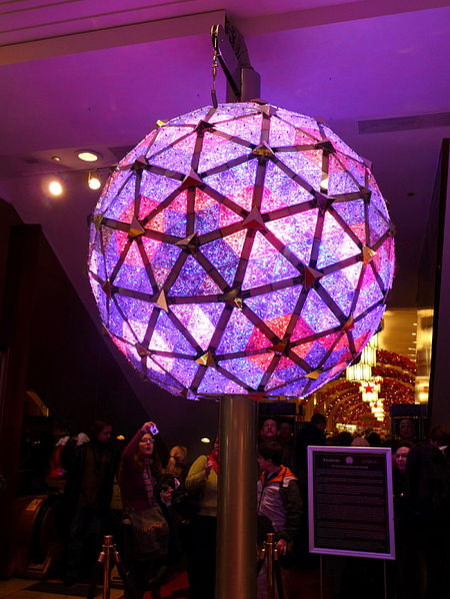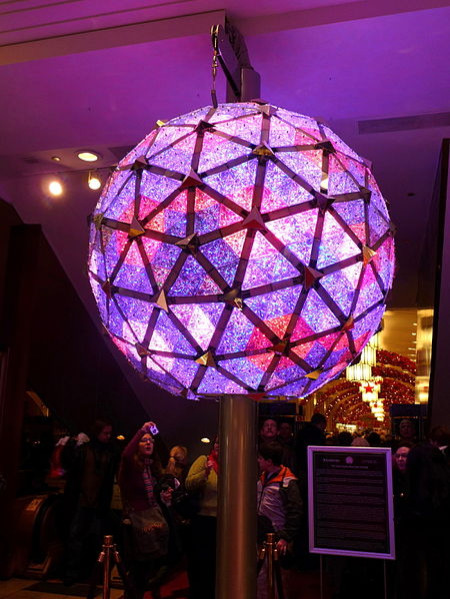Times Square Ball Drop Facts, History And Photos
Dropping a ball in Times Square to ring in the new year is a tradition that dates back to 1907.
Since then, the Times Square ball has put on the pounds. The first ball dropped from the Crossroads of the World weighed 700 pounds and was made of iron. For 2014, the ball weighs more than 11,000 pounds and is composed of 2,688 Waterford Crystal triangles illuminated by more than 32,000 LEDs.
Since the ritual began, there have been seven different balls constructed to usher in the new year. The first ball was dropped from 1907 until 1919. In 1920, a 400-pound ball made of wood and iron was made. That was followed by a 150-pound aluminum ball in 1955, which had 180 light bulbs attached to it. Forty years later, in 1995, came the third version of the Times Square ball, which added rhinestones and computer controls. Waterford Crystal and Philips Lighting redesigned the ball in 2000 for the millennium, when LED lights were added. The Times Square ball got another makeover in 2007 for the 100th anniversary of the tradition. The sixth version was created to ring in 2008.
This year’s ball is 12 feet in diameter, weighs 11,875 pounds and has 627 LED modules bolted on to it.
The ball has been lowered in Times Square in every year except 1942 and 1943, when the festivities honored the “dimout” of lights in New York City during wartime. But that didn’t stop the celebration, according to the Times Square Alliance.
“Nevertheless, the crowds still gathered in Times Square in those years and greeted the New Year with a minute of silence followed by the ringing of chimes from sound trucks parked at the base of the tower — a harkening-back to the earlier celebrations at Trinity Church, where crowds would gather to ‘ring out the old, ring in the new,’” the organization’s website states.
Although the Times Square ball drop is the most recognizable symbol of the new year, the practice of dropping a ball to count down a length of time actually began in England in 1833, according to the alliance.
The ball was perched atop the Royal Observatory in Greenwich and would drop at 1 p.m. to allow ship captains to adjust their chromometers.
The Greenwich ball led to the creation of 150 other time balls, although few have survived, the alliance noted.
“The tradition is carried on today in places like the United States Naval Observatory in Washington, D.C., where a time-ball descends from a flagpole at noon each day - and of course, once a year in Times Square, where it marks the stroke of midnight not for a few ships' captains, but for over 1 billion people watching worldwide.”
Below are the three most recent Times Square balls:



© Copyright IBTimes 2024. All rights reserved.






















